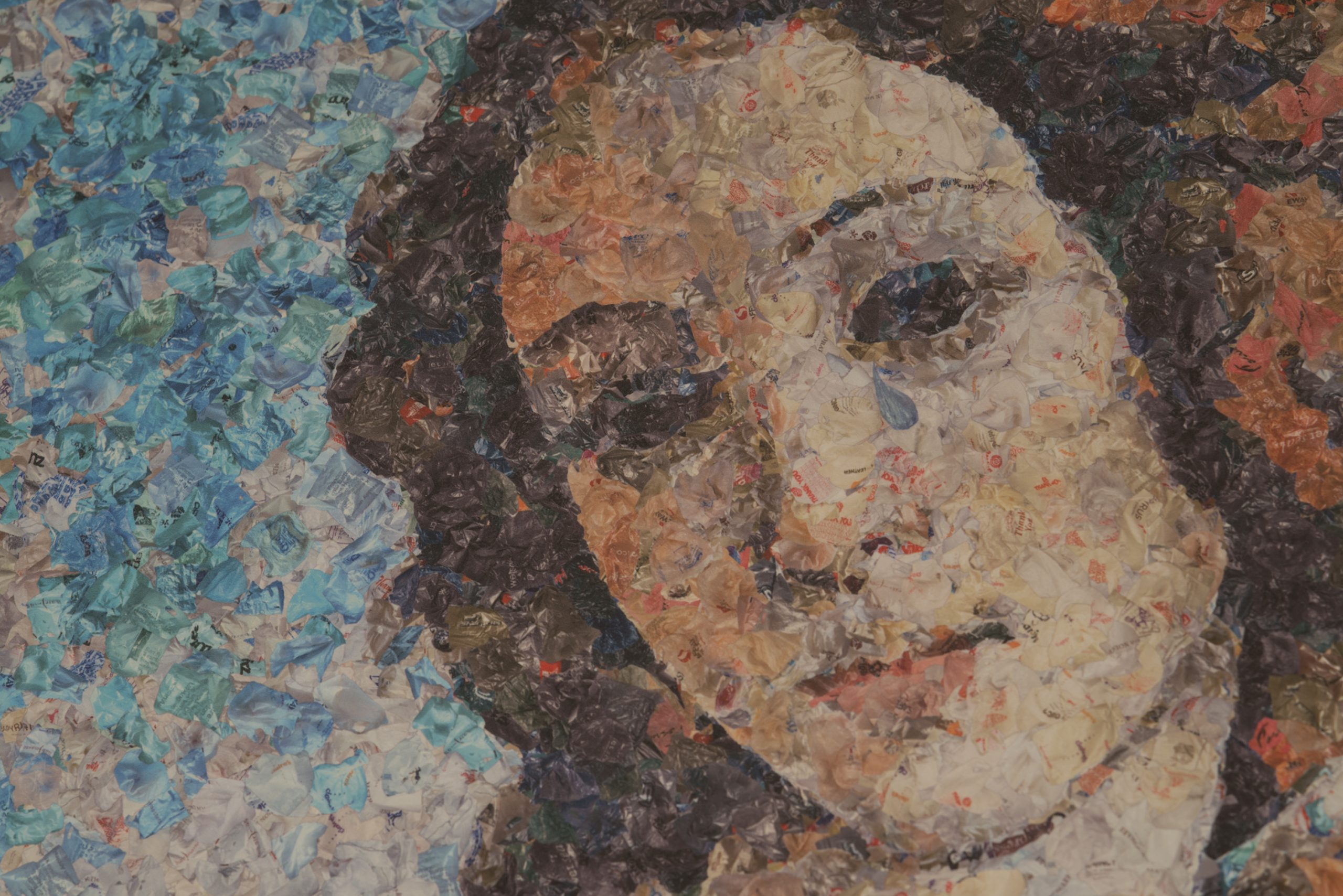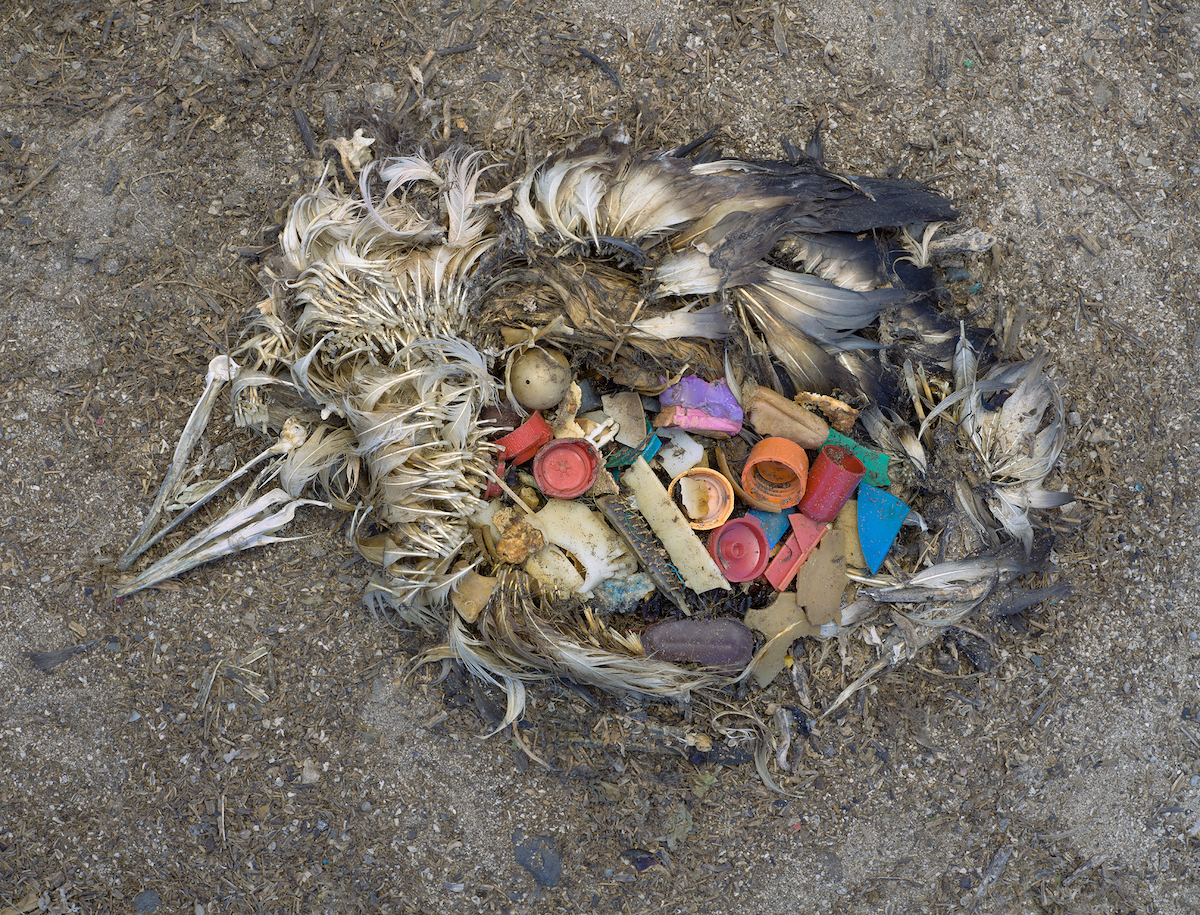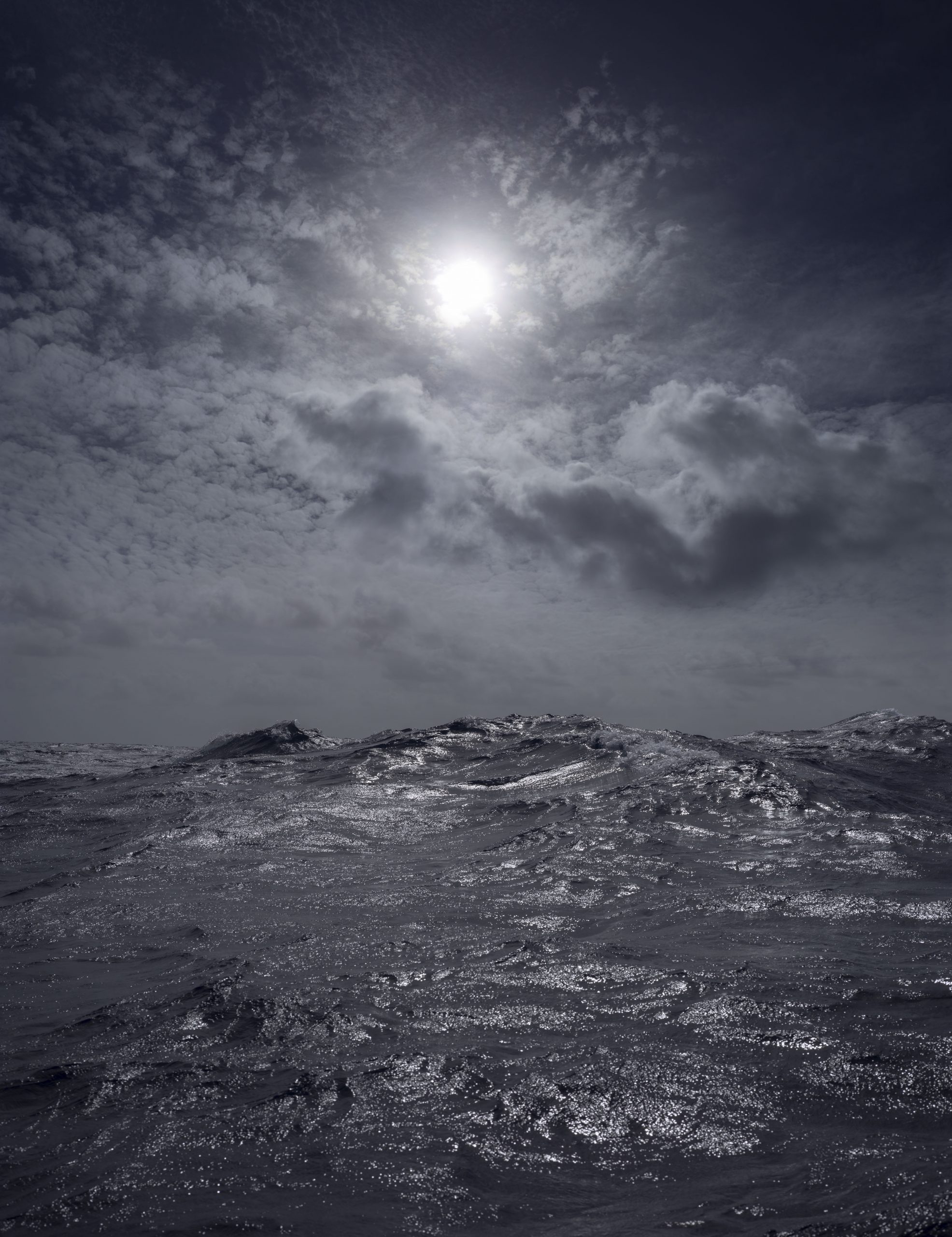


Bryan Granger (BG): How did you get interested in our problematic relationship with plastic?
Chris Jordan (CJ): The dark underbelly of our culture of mass consumption has fascinated me for many years, and when journeying into that territory, one can’t help but come up against plastic. It is such an iconic material, symbolic of the insanity of the human world: we know of its multileveled toxicity, and yet we use it to contain our food. It is made to last forever, yet we form it into things that are meant to be thrown away after a single use. And plastic has a kind of sterile perfection to it that I think makes us unconsciously seek it out as a way of avoiding the messy reality of life. Millions of people prefer to drink water from a clear plastic bottle than from a cup filled at a tap, even knowing that the tap water is cleaner, and even if the bottled water costs 2,000 times more. Maybe it is not too much to suggest that in one way, plastic serves as a kind of unconscious manifestation of our fear of death.

BG: How did you get started with your trips to Midway?
CJ: After about a decade of making large-scale photographic works about consumerism, I craved a way to face the issue on a more personal level. It can be overwhelming trying to grasp the enormous magnitude of global consumption in terms of things like plastic, oil, cars, computers, and so on. I wondered if there might be a way to experience ocean plastic pollution on a more comprehensible and personal scale. I had been studying the Pacific Garbage Patch, and I learned from a biologist friend about the tragedy that is happening on Midway. As soon as I heard about it, I felt this magnetic pull to go there and experience it personally.

BG: Your Midway images often evoke a visceral response. ls this important for your work to succeed? How do you expect viewers to react?
CJ: I don’t think very much about how people should respond to my work. For me the important thing is to keep the attention focused on the subject, aiming my effort at honoring its complexity and depth as much as possible, and letting go of how people will receive the work. In the case of the plastic filled birds, there is deep multi-layered horror there, and I know from my own experience how hard it is to face that head-on.
Standing over the dead birds brings a mixture of feelings that is difficult to contain; at the same time the scenes were always held in an envelope of exquisite beauty and a kind of indescribable stillness. I don’t know how much those factors are evident in the images, but for me the experience was always nuanced and complex. It has been surprising to see the response that people have to my Midway work. I imagined that this subject would be too difficult for most people to look at, and so the project would be mostly ignored and lost to obscurity, as happened with my Katrina series and my Kenya work of dead elephants killed for their tusks.
But the Midway work has reached a much larger audience than anything I have done previously, and the positive response to the film Albatross has been astonishing so far. In this way, I am learning something about people’s desire and capacity for facing the truth of our times, and for me that is a real source of hope.

BG: Can you tell us about the Pacific series and how you got started with it?
CJ: I have always been in love with the undulating play of light on water. There is something mesmerizing about its flickering quality, like fire, so ephemeral, arising and passing so quickly, impossible for the eye to hold onto for even an instant. And there is something humbling about knowing that this macro vs micro duality of the cosmic dance is happening on every square inch of all of the world’s bodies of water, always. I first started photographing this subject a few years back and slowly a technique emerged for capturing minute fractal patterns and fine details that move and sparkle faster than the human eye can perceive. It turns out that there is some really cool stuff happening there when you capture it at 1/4000th of a second. And in another way, this project gives some respite from my long-term practice of looking into the dark aspects of our culture of mass consumption. I think I have needed some balance, to remember that standing in the beauty of our world can be just as transformational as facing the horror. There are forces at play in our culture right now that would like to make beauty irrelevant, and that is one reason why it is more important than ever to turn towards beauty. In fact, perhaps turning away from beauty was how we got ourselves into this mess in the first place, and turning back toward it might just be the key that opens the doorway home.
You can find the complete interview in the SEA CHANGE exhibition booklet on Chris Jordan’s exhibition page on our website.